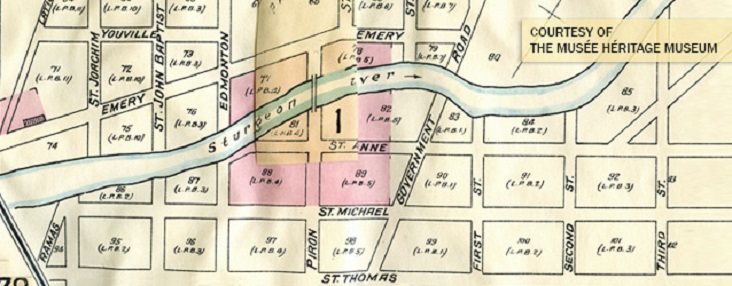Frequently Asked Questions
How do I get my building designated as a Municipal Historic Resource?
If an owner wishes to designate their building as a Municipal Historic Resource, the building must first be on the Inventory. If the building is on the Inventory, the owner may then submit an application to designate their building as a Municipal Historic Resource to the City of St. Albert. City staff will guide the owner through the application process and refer the application to the St. Albert Arts and Heritage Foundation (AHF). The AHF will review the application, tour the property to review the condition of the Character-Defining Elements, as outlined in the Statement of Significance, and then make a recommendation to Council regarding the application.
What is the cost of the owner to designate a property?
St. Albert’s approach to designating a property as a Municipal Historic Resource, is that it not cost the owner. Rather, the City will cover the expenses incurred when designating a property.
If my house is old, can it be added to the St. Albert Heritage Inventory?
There are a number of criteria used to evaluate buildings to determine whether or not they would qualify for the St. Albert Heritage Inventory. The building must be assessed based on evaluation criteria set out in the Inventory which considers the eligibility, significance and integrity of the property. If a building on the Inventory is a designated Municipal Historic Resource, it means that City Council has adopted a legal contract called the Conservation and Monitoring Agreement with the owner to legally protect the property from inappropriate alterations.
Are properties on the St. Albert Heritage Inventory protected from demolition?
Properties on St. Albert’s Heritage Inventory are not protected from demolition. Buildings on the Inventory are historic buildings that have architectural or social significance to St. Albert. Only by designating a historic property as a Municipal Historic Resource will it permanently protect it from demolition and inappropriate alterations. This agreement or bylaw is registered on the property’s Land Title. Demolition may proceed if the bylaw is rescinded by Council.
How can a historic property be permanently protected from demolition?
Designating a historic property as a Municipal Historic Resource permanently protects it from demolition and inappropriate alterations. The Designation Bylaw is registered on the property’s Land Title.
Does the province provide funding for rehabilitation of historic buildings?
Yes, the Alberta Historical Resources Foundation maintains the Heritage Preservation Partnership Program to assist owners of designated heritage properties with the costs associated with restoration and maintenance. These programs must be applied to through the province.
What is eligible work for conservation grants?
- Architectural detailing and woodwork
- Exterior cleaning, preparation and painting
- Doors and windows
- Major structural work, including foundations roofs
- Flashing, caulking and weather-stripping
- Masonry conservation
- Interior spaces (in exceptional circumstances)
- Exterior cladding
- Professional services that contribute to the restoration of the building
What is ineligible work for conservation grants?
- Work not specified in the Heritage Designation and Conservation Compensation Incentives Agreement
- Interior demolition
- Administrative costs, permit fees, and legal fees
- Operating or regular maintenance costs
- Tenant improvements unless those improvements repair or restore significant historic and architectural materials and are included in the designation.
- Privately owned building/structure relocation
- New construction except where such is an accurate restoration of a significant architectural element or feature.
- Energy retrofitting /upgrading, (insulation, vapour barriers, etc.)
- Installation of modern building services such as heating, ventilation and air conditioning systems, and electrical or plumbing services upgrading to meet code.
- Utility services and installation costs
- Installation of new services or amenities such as handicap access, elevators, washrooms, security and fire alarm systems
Related Pages
Last edited: March 4, 2022

